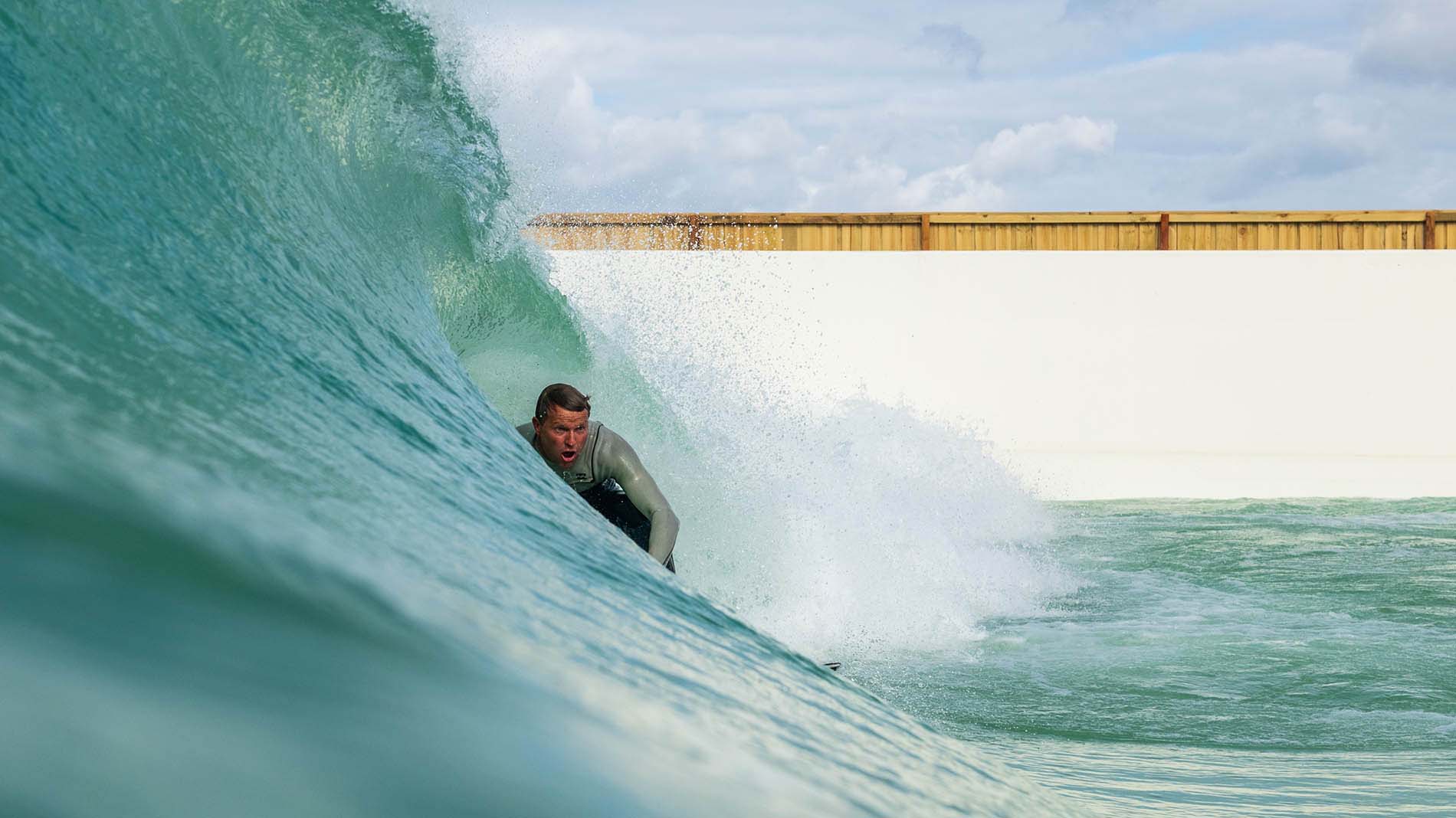Know your Cove: Understanding wave settings from Wavegarden

The world woke to wave pool Wavegarden potential when Urbnsurf made their internet debut with Beast Mode. Prior to that, we’d only seen the smaller Wavegarden test facility pump out slabs. And at one-fifth the size of Melbourne’s Cove, those videos of Josh Kerr and Felipe Toledo airdropping into barrels, while stunning, paled next to Urbnsurf’s version of heavy water.
The Beast Mode clip tore through Instagram with more shares and comments than any other pool clip since Kelly’s wave debuted. Meanwhile, The Wave in Bristol unveiled to the world glassy, perfect little peelers reeling down a concrete wall. Both waves are fun. But both are very different.
Surfers wondered how could these waves possibly be generated by the same machine? If both Urbnsurf and The Wave are using Cove technology, then why are we seeing such different surf in each location?” To find out what the basic wave settings are for the Cove technology we spoke with Wavegarden’s Destination Development Advisor Sean Young.
“We are using four broad classifications of wave types that we can produce in the reef areas for our system,” said Young. “They are, Waikiki Waves, Malibu Waves, Turn Waves and Barrel Waves. I think the wave descriptions are all self-explanatory.”
A super-charged version of the Malibu Waves setting is what The Wave is currently using for its advanced settings. The upcoming Advanced Plus and Expert setting will use either Turn Waves or Barrel Waves (or a mixture of both.) At the time of this writing, Urbnsurf offers the public the Turns Waves and some Barrel Waves options for their advanced sessions. Beast Mode, like many Wavegarden waves, is a subset within one of the brand classifications of wave types. In this case, Barrel Waves. The Beast is only available for private sessions.
“We typically program two-to-three types of Waikiki Waves, four or more Malibu Waves, six Turns waves, five-to-six barrel waves and one-to-two aerial waves,” said Young. “In this way, our partners (surf parks like Urbnsurf) have lots of flexibility and options to create sessions for different ability levels.”
When the Stab High event kicks off it will naturally use Wavegarden’s air settings. In a previous announcement, Stab said they will have an engineer 10 time zones away programming the ramps in real-time.
It turns out Urbnsurf’s media darling Beast Mode isn’t their invention. Sean Young says the Beast was actually a term invented by Wavegarden. Either way, Young reiterates that the variety of waves on offer from his company serve up something for everyone.
“A good expert session could offer Turn 3, Turn 6 & the Beast waves, while a good advanced session could offer Turn 2, Turn 4 and Barrel 1 waves,” said Young. “An intermediate session could offer Malibu 2, Malibu 3 and Turn 1 waves with an improver session offering Waikiki 1 and Malibu 1 waves.”
For half a dozen years from deep in the Basque Country of Spain Wavegarden spent long days adjusting their settings. Because the wave generating system works through a complex system of individual water-moving chambers, the cumulative wave options are mind-boggling to the average surfer.
“We do all of the tweaking as we are the inventors of the technology and the only people who know how to create new types of waves using our technology – it’s all linked to very complex fluid dynamic analysis.”
In the future, should surf parks want more than the current Wavegarden menu of wave options, the company can update wave-making machines across the globe from their headquarters and upload new waves to each remote location. Something we’ll see more of as more Coves open up in the next few years.
Related Coverage
